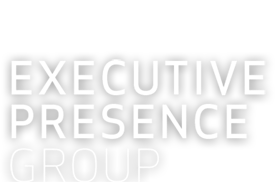
How to reach the C-Suite
What do talented and driven women do to reach the executive suite? While there are no guarantees, those who have reached the top have some common advice: you have to know who you are, you have to explore and to learn what is important for you, know and play to your strengths, own your decisions and learn from your mistakes, learn how to ask for help and repay the support you have received.
This is a road map for a journey to reach the executive suite. As with all journeys, the best intentions are to reach the destination. But, as we all have learned, even the best-laid plans can’t prevent life’s unexpected twists and turns. Over the course of your life, you will be presented with many opportunities, challenges and decisions. You will be faced with unexpected twists and turns. You can idolize that prime position, only to realize you are miserable in it. Or, you can stay where you’re happy, and not make enough to support yourself or your family. Career ups and downs are inevitable, and as long as you stay focused, you will keep moving in the right direction for you. Set professional immediate and long-term goals so that even when life throws you the inevitable curve ball, you can refocus on them and you’ll get right back on track.
Road Map — Executive Presence and the Four Career Stages
Learning and developing behavioral skills for each of the 10 executive presence characteristics in each of the four stages influences the successful achievement to transition to the next stage. Start with “leading self,” which is the foundation for the next stages of career progression to a senior position.
10 Executive Presence characteristics
- Authenticity – Be yourself
- Communication Skills – Be a skilled communicator, both oral and written
- Competence – Be an expert in your field and continue to learn
- Confidence – Have high self-esteem and a healthy sense of self
- Courage – Be a risk taker
- Decisive – Formulate a strong process for making decisions
- Emotional Intelligence – Be able to read others, understand the impact of emotions, yours and others, and create trusting relationships
- Integrity – Have a set of strong values and practice consistently
- Presence – Be present in the moment and leave a powerful impression
- Vision – Be a forward thinker
The four career stages and their themes
- Stage #1: Leading Self – The first stage is to understand yourself and learn about your strengths, limitations, preferences and how you relate to the people around you. This is where you learn how to take that information and build a strong foundation of self and a personal brand from which all decisions are made. Before you can lead others, you have to know yourself and what you will need to know to be successful and to get others to trust and follow you. Assessing your level in the 10 characteristics will help you build a plan to move to the next stage.
- Stage #2: Leading Others — The second stage is where you learn how to lead others, while you continue to build on Stage #1 characteristics. Consistently living a personal brand, gaining the trust and respect of others by being authentic and standing for what you believe in when challenged by others allows your co-workers to believe and trust you enough to follow your lead. During this stage you, as a leader, use the tools, self-awareness and leadership skills to gain insights into the core beliefs of others and learn how those beliefs drive their behaviors to create an engaged, empowered and high-performing team. Working to fully integrate the 10 characteristics will strengthen your leadership skills.
- Stage #3: Leading a Complex Enterprise/Culture – The third stage involves living and practicing integrity, having a futuristic vision and a means for getting large groups of people to believe and follow your vision, a willingness to live with ambiguity and manage dilemmas and the courage and resilience to stay the course during adversity. Building upon Stages #1 and #2, Stage #3 is grounded in sustainability. In this step, your focus is on strategically creating alignment between people, processes and performance. Using all 10 characteristics at the highest level will sustain a strong culture.
- Stage #4: Leading Your Legacy – The fourth stage is the culmination of learning, practicing and integrating all 10 characteristics into your personal and professional life and creating your legacy. It’s something you create during your lifetime to benefit future generations — something you yourself may never see come to fruition. Just like a farmer who plants a tree knowing he’ll never live to taste its fruits, a legacy is a gift you leave behind without expecting anything in return. Think of John F. Kennedy and the space program or Martin Luther King, Jr. and civil rights. They died before their legacies were fulfilled, but they will be forever revered for their efforts. Just like that farmer’s sprouting tree, legacies don’t happen overnight — and they don’t happen by accident. They’re deliberately crafted over years of hard work and dedication — experiences, challenges and opportunities. Teaching others to practice the 10 characteristics ensures a lasting legacy.
Through the Executive Presence Group offerings, we will help guide your journey to help you determine the best route to reach the executive suite.
You have an exciting opportunity in front of you to take charge of your career and build the professional journey you desire. We can help you get there.
